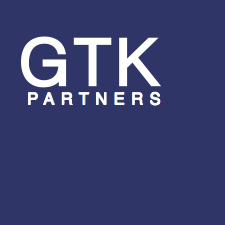Peter SChmidt, Chief Executive Officer, Torc Robotics
Listen on Apple Podcasts, Spotify or anywhere else.
At the heart of the coming revolution in autonomous trucking sits Peter Schmidt, CEO of Torc Robotics, an independently managed holding of Daimler Truck. Peter sat down with Tech. Cars. Machines. at CES 2024 in Las Vegas and signaled a transformative era for logistics and transportation. “It’s not a dream anymore”, he said of driverless trucking: Torc’s commercial objective is a scalable product in 2027.
With an almost unheard-of 17-year history in autonomy, Torc Robotics emerged from a run at the DARPA Challenges by a team of Virginia Tech students. To be self-funding, the Company focused on early adopters in the mining and military sectors. Concurrently, in the late 2010’s, Daimler Truck, whose technology focused on fuel efficiency and zero emissions, noticed the potential of autonomy in trucking.
In 2019, Daimler took a majority position in Torc, and Peter joined the Board from Daimler. “I was on the board of Torc Robotics for almost three years. And then, after 17 years, Michael Fleming, the founder, decided to step down, because “Torc now is a really big company, and it's all about launching a product.” Peter took over as CEO: “ I’m not a founder, I couldn't have founded it, but I have run really big engineering projects and launched products, and I think that was just a perfect time to really swap seats.”
“No hobbies”, is a phrase Peter uses often. “Autonomy is … perfect [for] distractions. You can do US, Europe, China, Class 6, 7, 8, you can do electric, you can do diesel, you can do shovels, you can do taxis…I think what was important for TORC to really early-on decide that… the driver shortage is super pressing... It's not that there are not enough drivers necessarily… but most drivers, I think, 85% of the drivers in long haulage, they want to go more local. They want to see their family each day, instead of being three weeks on the road.”
Having defined long-haul as the key application, Torc further defined its focus: “… no hobbies, no hobbies. We concentrate on one thing. It's a Freightliner Cascadia, US, Class 8, full stop, nothing else.” This decision, of course, presents its challenges: “… trucking is really, really challenging because we are moving 80,000 pounds at car speed. But a truck does not brake as good as a car, and especially, it does not accelerate like a car. So it's not only there that you need more vision to the front. You need much more good vision, also, to the back…and that's why, especially in trucking, you do not want to compromise on long-range sensing. It's so important that you really, to the front and to the back, perceive your environment so that you can also predict what the other actors are doing and that you can pick the right path for yourself.”
Despite the challenges, Torc seems quite confident of delivering a commercial product in 2027 capable of hub-to-hub driverless driving. “…Our target is a lot of typical distribution centers, logistic centers, they aren't just industrial areas. They're not that difficult to reach, because they're not in a city. And as long as they have enough volume. It doesn't make sense if one truck is leaving per week… [but if] a couple of trucks are leaving each day at this hub, we want to reach it.”
In fact, Peter seems to be looking beyond early commercialization milestone. When discussing the future, “no hobbies” turns to “no limits”. “Once you have developed the technology and solved it, then you can roll it out, no limits… the technology is built for global rollout, across all brands outside of the Daimler series. It's important if you develop a technology that is really modular, and that you then can adjust to the local leads of Europe, of America, you name it.”
After our interview, since at heart I’m still a little boy who loves big equipment, I extracted a promise from Peter to give me a tour of their facilities in Albuquerque, New Mexico. At least that’s how I remember it, and I’m holding him to it.
